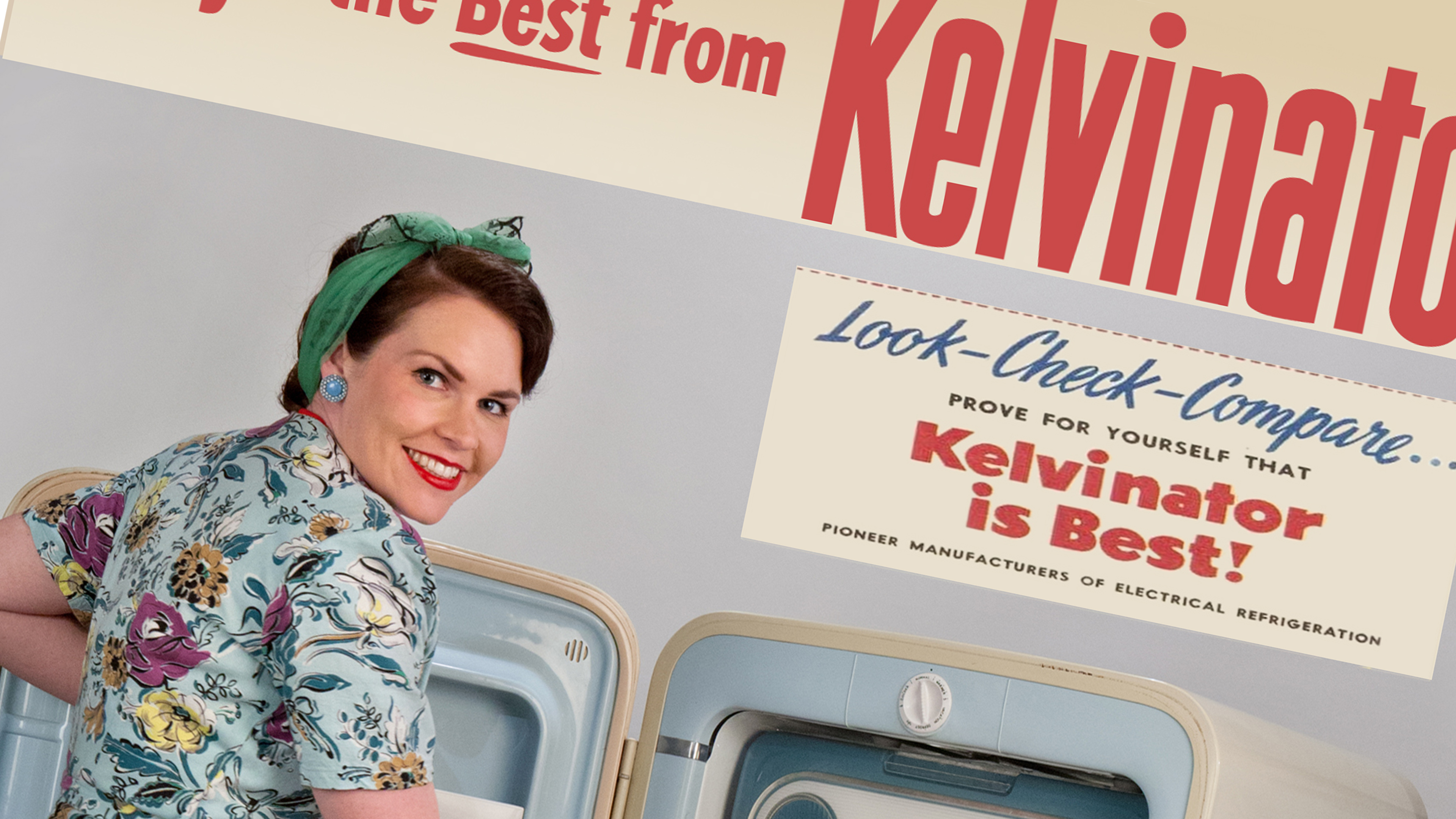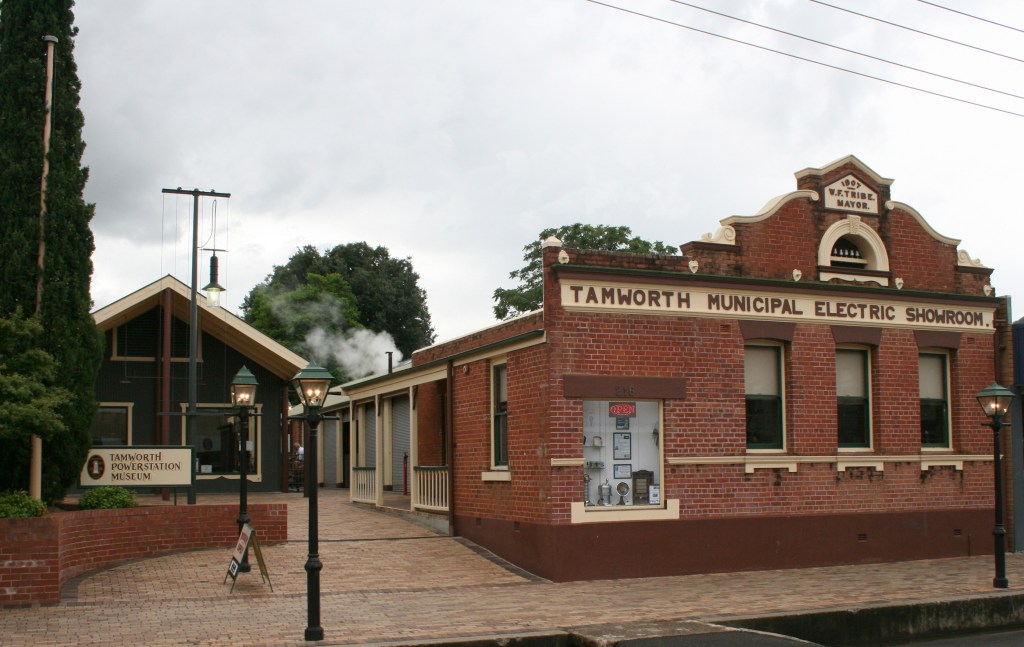Hidden at the Back of the Fridge
Reproduction Kelvinator Advertising Poster
A 2015 image created by designer Miranda Heckenberg, with staff and volunteers at the Tamworth Powerstation Museum, this pastiche mimics 1950s and 60s advertising. Using the colour palette, fonts and text to recreate the post-war period this fun image has multiple elements revealing so much about the period if we look.
The model, Kathryn Armstrong, is wearing a house coat. This outfit was designed so women could do housework and other day-to-day chores without dirtying their ‘good’ clothes. If there was a knock at the door, a housewife would be presentable. Likewise, the head scarf helps protect and set the hairstyle for when the husband returned at the end of the day.
Inside the fridge, the gold aluminium jelly mold hints at the role aluminium had after the Second World War when it was no longer required to make military aircraft. The bright orange Tupperware, now kitsch, was important socially for women and arguably as a tool of empowerment with the Tupperware parties small social businesses housewives could run from the home. Of course, the food preservation a refrigerated air sealed container allowed was also new.
At the back of the fridge stands a tall bottle with orange liquid. In post war Australia there were over 600 cordial companies producing cordial syrups and fizzy drinks, often delivered weekly to the home in the same way as the milk. Those cordial companies are now mostly gone, swallowed by larger multinational companies like the small coke bottles sitting in the fridge door.
The fridge door also holds a ubiquitous jar of vegemite and a small tin of tea. Australians had always been large tea drinkers. With the waves of migration that occurred in the 1950s a new hot drink emerged – coffee. But you needed to go to one of the new cafes and diners run by the Greek and Italian migrants to sample that.
The Kelvinator fridge is still in working order after seventy years operation. A silent, often overlooked witness to a changing society, the image reminds us so much of our history can be hidden in plain sight.





